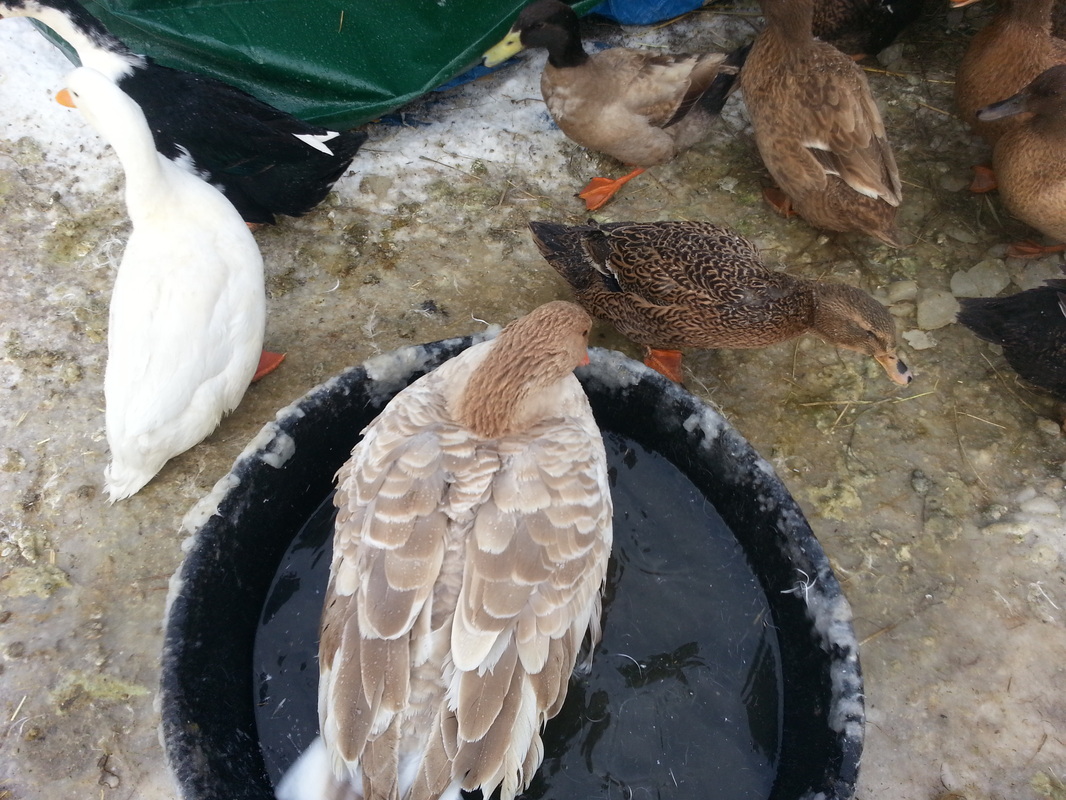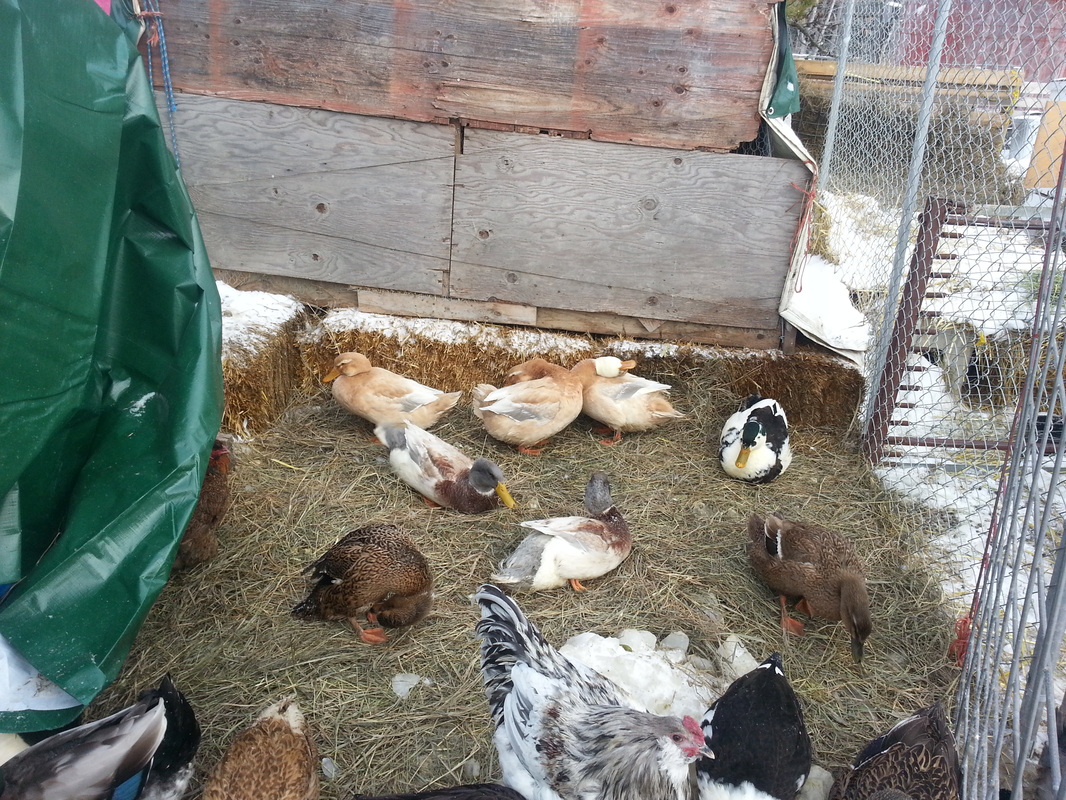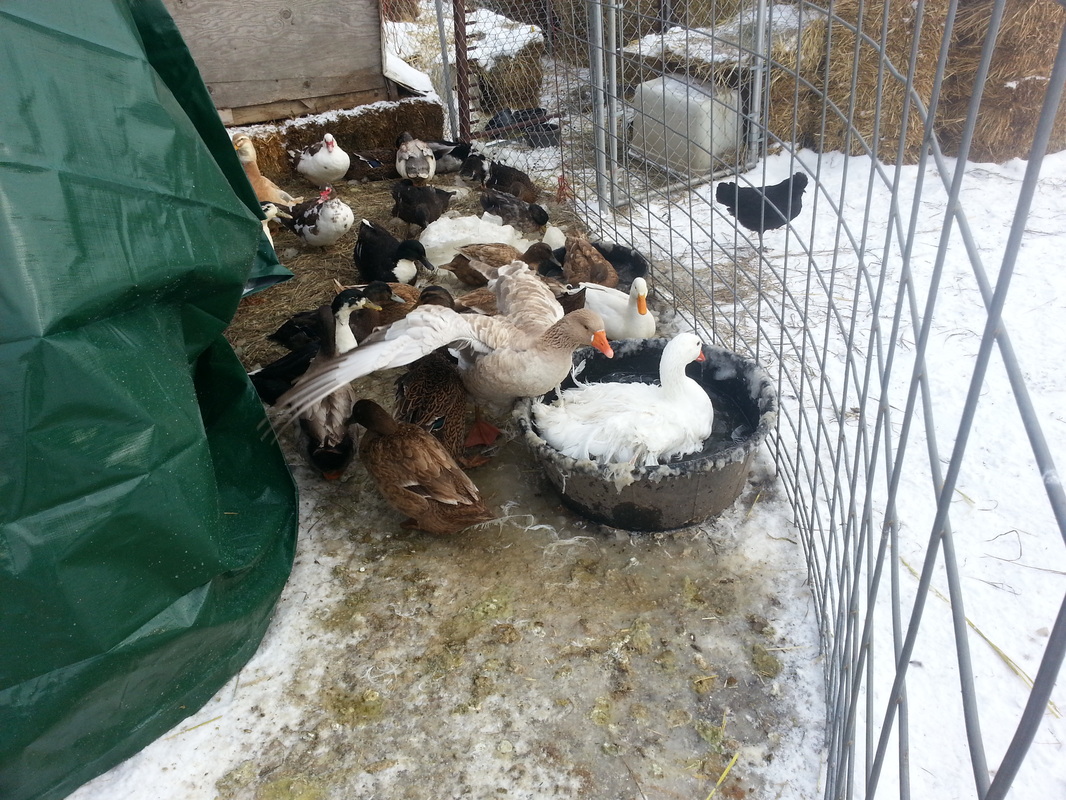 You can see the ice on the tub edge already. In a bit the feathers of the American Buff goose will look the same.
You can see the ice on the tub edge already. In a bit the feathers of the American Buff goose will look the same. The ducks and geese go into their tubs and flick the water over thier backs, wetting the feathers. Then they sit for an hour afterwards and preen. This means that they spread the oil from their oil gland near the tail, with their beaks, through out the feathers. The oil helps to unify the feathers and then keep the birds warmer. This seems counterproductive when the tempatures are so low that immediately upon leaving the water, it freezes to ice on their feathers, but it does work.
The ducks prefer to be outside during the day and do not require too much shelter, just a place away from the wind and off the cold ground, with a roof to keep the snow off too. Bi weekly, or as needed, I spread some fluffy straw on the floor of their shelters. The birds tuck their legs and feet up into their sides though and rest on their breasts, which are amply covered with feathers and underneath those, a beautiful layer of fine down. The water actually does not penetrate their feathers if they are in good condition.
The Sebastopol geese worry me though. They have open feathers and not much down in comparison to the other geese, yet they love to bathe just the same. They also sit and preen and are not shivering, so I assume they are not cold, but they do not have the insulation against the cold that other geese do. Fortunately, the ducks and geese crowd themselves into an 8 x 10 shelter, so their body heat does keep the shelter warmer and the proximity to each other keeps the birds warmer too. It is always nice to cuddle up to a buddy.
The Muscovy ducks do not sleep with the other waterfowl and instead, go into one of the chicken coops. The body temperature of chickens is higher than ducks and in that coop there are a lot of them, so perhaps it feels warmer to the Muscovy ducks. The caruncles, or red raised bits on their faces, can freeze and if they do, it means that they could get brain freeze too, in which case, death would result. Today they all got new straw in their coops and they had their daily baths too. I could stand and watch them for a long time, I find them so interesting. But when the temperature is well below zero and the wind is blowing, standing to watch is not really a good option.
Another thing I do not comprehend is how they know each other. The Saxony ducks, three girls, got two Saxony drakes recently. I did not segregate them to introduce the drakes to the girls, but some how they know who is who and they hang around together. I see that when mating occurs in the spring too. The Rouens hang around together and the Campbells too, and now the Saxony ducks will likely too. Pretty cool things, those birds. Aren't they?



 RSS Feed
RSS Feed